This article was co-authored by Karen Litzy, PT, DPT. Dr. Karen Litzy, PT, DPT is a licensed physical therapist, international speaker, owner of Karen Litzy Physical Therapy, PLLC, and the host of the Healthy Wealthy & Smart podcast. With over 20 years of experience, she specializes in a comprehensive approach to practicing physical therapy utilizing therapeutic exercises, manual therapy, pain education, and home exercise programs. Karen holds a Master of Science in Physical Therapy and a Doctor of Physical Therapy from Misericordia University. Karen is a member of the American Physical Therapy Association (APTA) and is an official spokesperson for the APTA as a member of their media corps. She lives and works in New York City.
There are 25 references cited in this article, which can be found at the bottom of the page.
This article has been viewed 68,315 times.
Piriformis Syndrome is a painful condition that occurs when the piriformis — the largest of the muscles that help to rotate the hips — compresses the sciatic nerve, which extends from your spinal cord into your lower back and down your legs. This compression causes pain in the lower back, hip, and buttocks. The existence of piriformis syndrome is controversial in the medical community: some believe the condition to be over-diagnosed, while others believe it is under-diagnosed.[1] Only a trained physician can diagnose piriformis syndrome. However, you can learn to recognize the symptoms and know what to expect from a visit to your doctor.
Steps
Understanding Your Risk Factors
-
1Consider your sex and age. Research indicates that women are six times more likely to have piriformis syndrome than men.[2] Piriformis syndrome occurs most commonly in people between ages 30 and 50.
- The higher rate of diagnosis among women may be explained by the difference in biomechanics in men's and women's pelvises.
- Women may also develop piriformis syndrome during pregnancy. Because the pelvis widens during pregnancy, it can cause the attached muscles to contract.[3] Pregnant women also often develop a pelvic tilt to accommodate the baby's weight, which can also lead the attached muscles to become tight.
-
2Evaluate your health. You may be more likely to be diagnosed with piriformis syndrome if you have certain other medical conditions, such as low back pain.[4]
- About 15% of cases are due to a congenital or structural anomaly concerning the relationship between the piriformis muscle and the sciatic nerve.
Advertisement -
3Consider your activities. The majority of cases of piriformis syndrome are caused by what doctors call “macrotraumas” or “microtraumas.”[5]
- A macrotrauma is caused by a significant traumatic event, such as a fall or a car accident. Macro-trauma to the buttocks, which leads to inflammation of the soft tissue, muscle spasms, and nerve compression, is a common cause of piriformis syndrome.
- A microtrauma is a pattern of repeated minor injury to an area. For example, long-distance runners expose their legs to constant micro-trauma, which can eventually cause nerve inflammation and muscle spasm. Running, walking, climbing stairs, or even sitting for long periods of time can cause your piriformis muscle to compress and entrap the sciatic nerve, causing pain.
- Another form of microtrauma that may cause piriformis syndrome is “wallet neuritis.” This condition can occur when a person carries a wallet (or cellphone) in his back pocket, which can press against the sciatic nerve, causing irritation.
Recognizing the Symptoms
-
1Monitor the source, type, and intensity of pain. One of the more common symptoms of piriformis syndrome is pain felt in the buttocks, where the piriformis is located. If you consistently feel sharp pain in one of your buttocks, you may have piriformis syndrome. Other pain to look out for that could indicate this condition includes:[6]
- Pain radiating down the back of your thigh, and sometimes into the back of the calf and into the foot.[7]
- Pain when you touch the back of your buttocks.[8]
- Tightness in your buttocks.[9]
- Increased pain when you rotate your hip.[10]
- Pain that improves when you move around and gets worse when you sit still.
- Pain that is not completely relieved by a change of position.
- Groin and pelvic pain. This may include pain in the labia for women and pain in the scrotum for men.
- Dyspareunia (painful sexual intercourse) in women.
- Painful bowel movements.
-
2Evaluate your gait. The compression of your sciatic nerve caused by piriformis syndrome can cause difficulty walking. Your leg may feel weakened as well. The two main things to look for when experiencing difficulty walking include:[11]
- Antalgic gait, which means a gait that develops to avoid pain. This usually leads to limping or shortening your gait to keep from feeling pain.
- Foot drop, which is when your forefoot drops without your control because of pain in your lower leg. You may not be able to pull the foot up towards your face.
-
3Take note of tingling or numbness. When your sciatic nerve becomes compressed due to piriformis syndrome, you may begin to feel a numb or tingling sensation in your foot or leg.[12]
- These sensations, or “paraesthesias,” may present as “pins and needles,” numbness, or tingling.
Seeking Medical Diagnosis
-
1Consider seeing a specialist. Piriformis syndrome is difficult to diagnose because its symptoms are generally the same as the more common lumbar radiculopathy (numbness in the leg caused by low back pain). Both conditions are caused by the compression of the sciatic nerve. The only difference is where the sciatic nerve is being compressed. Piriformis syndrome is far more rare than low back pain, and most primary care physicians are not given much training in this syndrome. Instead, consider seeing an orthopedist, a specialist in physical medicine, or an osteopathic physician.
- You may need to see your primary care physician first to ask for a referral to a specialist.
-
2Be aware that there is no definitive test for piriformis syndrome. Your doctor may need to conduct an extensive physical exam and perform tests before reaching a diagnosis.
- Some tests, such as a MRI, CT scan, or nerve conduction study, may be used to rule out other conditions such as a herniated disc.[13]
-
3Have your doctor conduct diagnostic tests. To determine if you have piriformis syndrome, your doctor will begin by evaluating your range of motion by asking you to perform several exercises including straight leg raises and leg rotations. There are a number of other tests that can indicate the presence of piriformis syndrome, including:[14]
- The Lasègue sign: Your doctor will ask you to lie on your back, flex your hip at a 90 degree angle, and extend your knee straight out. A positive Lasègue sign means that pressure on the piriformis muscle while you are in this position causes you pain.
- The Freiberg Sign: In this test, your doctor will internally rotate and lift your leg while you lie flat on your back. Pain in your buttocks when doing this movement may indicate piriformis syndrome.
- The Pace Sign: In this test, you will lie on the unaffected side. Your doctor will flex your hip and knee, then rotate your hip while press down on your knee. If you feel pain, you may have piriformis syndrome.
- Your doctor may also “palpate” (examine with the fingers) your greater sciatic notch, a notch in one of your pelvic bones through which the piriformis muscle passes.
-
4Check for sensory changes. Your doctor will likely test your affected leg for sensory changes or a loss of sensation. For example, your doctor may lightly touch your affected leg or use an implement to cause a sensation. The affected leg will have noticeably less sensation than the unaffected leg.[15]
-
5Have your doctor examine your muscles. Your doctor should check your muscle strength and size. Your affected leg will be weaker and may be shorter than your unaffected leg.[16]
- Your doctor can also palpate your gluteus (the largest muscle in your buttocks) to determine the condition of the piriformis muscle. When the muscle is very tight and contracted, it can feel like a sausage.
- Your doctor will also check the amount of pain you experience from pressure on your gluteus muscle. If you experience pain or tenderness deep in the buttocks or hip region, this is a sign that your piriformis muscle is contracted.
- Your doctor will likely check for gluteal atrophy (shrinkage of the muscle). In chronic cases of piriformis syndrome, the muscle begins to wither and shrink. This can be seen in visual asymmetry, where the affected buttock is smaller than the unaffected buttock.
-
6Request a CT scan or an MRI. While doctors can check for signs by performing physical tests, there are currently no diagnostic tests that can fully diagnose piriformis syndrome. Because of this, your doctor may order a computed tomography scan (CAT scan or CT scan) and/or Magnetic Resonance Imaging (MRI) to determine whether something else is compressing your sciatic nerve.[17]
- A CT scan uses computer processes with x-rays to create 3D views of the inside of your body. This is achieved by taking cross-section views of your spine. A CT scan may help identify whether there are abnormalities near the piriformis muscle and can track any arthritic changes.[18]
- An MRI uses radio waves and strong magnetic fields to create images of the inside of your body. An MRI can rule out other causes of low back pain or sciatic nerve pain.
-
7Talk to your doctor about an electromyography study. Electromyography tests the reaction of muscles when they are stimulated with electricity. This method is often used when a doctor is trying to figure out whether you have piriformis syndrome or a herniated disc. If you have piriformis syndrome, the muscles around your piriformis will react normally to electromyography. On the other hand, your piriformis muscle and gluteus maximus will react abnormally to the electricity. If you have a herniated disc, all of the muscles in the area may react abnormally. Electromyography tests have two components:[19]
- A nerve conduction study will use electrodes taped to your skin to evaluate your motor neurons.
- A needle electrode exam will use a small needle inserted into your muscles to evaluate your muscles’ electrical activity.
Treating Piriformis Syndrome
-
1Stop doing the activities that cause pain. Your doctor may recommend that you temporarily cease activities that cause the pain, such as running or cycling.[20]
- If your pain is caused by the pressure from sitting for long periods of time, take regular breaks to get up and stretch. Doctors recommend that you get up, walk around, and lightly stretch every 20 minutes. If you are driving for long periods of time, take frequent breaks to stand and stretch.
- Avoid sitting or standing in the positions that cause pain.
-
2Get physical therapy. Physical therapy treatment is generally beneficial, especially if it is started early. Your doctor can work with your physical therapist to come up with a regimen that’s right for you.[21]
- Your physical therapist will probably guide you through a series of stretches, flexion, adduction, and rotation exercises.
- Soft-tissue massage of the gluteal and lumbosacral regions may also help relieve irritation.
-
3Consider alternative medicine. Chiropractic[22] , yoga, acupuncture, and massage have all been used to treat piriformis syndrome.[23]
- Because alternative medicine practices generally have not been scientifically researched to the same degree as more conventional medical approaches, you may want to consider discussing these methods with your doctor before beginning treatment.[24]
-
4Consider trigger point therapy. Sometimes piriformis symptoms can be caused by trigger points, or more commonly known as muscle knots. These knots are usually present in the piriformis or gluteal muscles. Pressure on these knots can produce local and referred pain. Most of the time, trigger points can "mimic" a piriformis syndrome. This is one reason why a lot of medical tests may come back negative, and may be the reason why doctors may under diagnose this condition.[25]
- Seek a health professional that has training in trigger point therapy, such as a massage therapist, chiropractor, physical therapist or even a physician. If trigger points are the cause, a combination of acupressure, stretching and strengthening exercises will often be recommended.
-
5Ask your doctor for a stretching regimen. In addition to the exercises your physical therapist has you do, your doctor can recommend stretches for you to do at home. Common exercises include:[26]
- Roll side to side while lying down. Flex and extend the knees while you are lying on each side. Repeat, alternating sides, for five minutes.
- Stand with your arms relaxed at your sides. Rotate side to side for one minute. Repeat every few hours.
- Lie flat on your back. Raise your hips with your hands and pedal your legs as though you were riding a bicycle.
- Do knee bends six times every few hours. You can use a countertop or chair for support if necessary.
-
6Use heat and cold therapy. Applying moist heat can loosen muscles, while applying ice after exercise can decrease pain and inflammation.[27]
- To apply heat, try using a heating pad, or place a damp towel in the microwave for a few seconds before applying it to the area.You can also take a warm bath, which can help relieve the tension and irritation of piriformis syndrome. Allow your body to be buoyant in the water.
- To apply cold, use ice wrapped in a towel or a cold pack. Do not apply the ice or cold pack for more than 20 minutes.
-
7Use NSAID pain relievers. Nonsteroidal anti-inflammatory drugs, or NSAIDs, help relieve pain and inflammation.[28] They are generally recommended to treat pain and inflammation from piriformis syndrome.[29]
- Common NSAIDs include aspirin, ibuprofen (Motrin, Advil), and naproxen (Aleve).
- Ask your doctor before using NSAIDs. They may interact with other medications or medical conditions.
- If NSAIDs do not provide sufficient relief, your doctor may prescribe muscle relaxants. Use these as directed.[30]
-
8Ask your doctor about injections. If you continue to experience pain in your piriformis area, talk with your doctor about local injections, which can include anesthetics, steroids, or botox.[31]
- Anesthetic injections, which commonly include lidocaine or bupivacaine injected directly into the trigger point, are successful in approximately 85% of cases in conjunction with physical therapy.[32]
- If local anesthetics do not relieve your pain, your doctor may recommend an injection of steroids or botulinum toxin type A (botox), both of which have been shown to relieve muscle pain.[33]
-
9Consult with your doctor about surgical options. Surgery is considered a last-resort treatment for piriformis syndrome and will not be used until all other options have been exhausted. However, if none of the other treatments relieve your pain, you may wish to consult with your doctor about the possibility of surgical intervention.[34]
- Surgical decompression of the piriformis muscle is only effective when neurologic deficits are present. The doctor will use electromyography and other tests to determine whether compressive neuropathy surgery, which will release the sciatic nerve, is necessary to relieve your pain.[35]
Expert Q&A
-
QuestionHow do you know if you have piriformis syndrome?
 Karen Litzy, PT, DPTDr. Karen Litzy, PT, DPT is a licensed physical therapist, international speaker, owner of Karen Litzy Physical Therapy, PLLC, and the host of the Healthy Wealthy & Smart podcast. With over 20 years of experience, she specializes in a comprehensive approach to practicing physical therapy utilizing therapeutic exercises, manual therapy, pain education, and home exercise programs. Karen holds a Master of Science in Physical Therapy and a Doctor of Physical Therapy from Misericordia University. Karen is a member of the American Physical Therapy Association (APTA) and is an official spokesperson for the APTA as a member of their media corps. She lives and works in New York City.
Karen Litzy, PT, DPTDr. Karen Litzy, PT, DPT is a licensed physical therapist, international speaker, owner of Karen Litzy Physical Therapy, PLLC, and the host of the Healthy Wealthy & Smart podcast. With over 20 years of experience, she specializes in a comprehensive approach to practicing physical therapy utilizing therapeutic exercises, manual therapy, pain education, and home exercise programs. Karen holds a Master of Science in Physical Therapy and a Doctor of Physical Therapy from Misericordia University. Karen is a member of the American Physical Therapy Association (APTA) and is an official spokesperson for the APTA as a member of their media corps. She lives and works in New York City.
Physical Therapist The piriformis muscle is a small muscle located deep in the buttocks. Piriformis syndrome is usually an irritation of the sciatic nerve caused when the piriformis muscle contracts. If you have that, you might have pain running down the back of your leg, into your thigh, calf, or foot. You might also notice tightness in your buttocks, and it might be painful to the touch.
The piriformis muscle is a small muscle located deep in the buttocks. Piriformis syndrome is usually an irritation of the sciatic nerve caused when the piriformis muscle contracts. If you have that, you might have pain running down the back of your leg, into your thigh, calf, or foot. You might also notice tightness in your buttocks, and it might be painful to the touch.
Warnings
- If you are feeling pain in your buttocks, you should contact your doctor so that you can diagnose your condition and begin treatment right away.⧼thumbs_response⧽
References
- ↑ http://www.ncbi.nlm.nih.gov/pmc/articles/PMC2997212/
- ↑ http://emedicine.medscape.com/article/87545-overview#a6
- ↑ https://www.ncbi.nlm.nih.gov/pmc/articles/PMC3618849/
- ↑ https://www.health.harvard.edu/diseases-and-conditions/ask-dr-rob-about-piriformis-syndrome
- ↑ https://www.physio-pedia.com/Piriformis_Syndrome
- ↑ https://emedicine.medscape.com/article/87545-clinical
- ↑ Karen Litzy, PT, DPT. Physical Therapist. Expert Interview. 27 August 2020.
- ↑ Karen Litzy, PT, DPT. Physical Therapist. Expert Interview. 27 August 2020.
- ↑ Karen Litzy, PT, DPT. Physical Therapist. Expert Interview. 27 August 2020.
- ↑ Karen Litzy, PT, DPT. Physical Therapist. Expert Interview. 27 August 2020.
- ↑ https://www.physio-pedia.com/Piriformis_Syndrome
- ↑ https://familydoctor.org/condition/piriformis-syndrome/
- ↑ https://familydoctor.org/condition/piriformis-syndrome/
- ↑ https://www.ncbi.nlm.nih.gov/books/NBK448172/
- ↑ https://www.ncbi.nlm.nih.gov/books/NBK448172/
- ↑ https://emedicine.medscape.com/article/87545-clinical#b4
- ↑ https://familydoctor.org/condition/piriformis-syndrome/
- ↑ http://emedicine.medscape.com/article/87545-workup
- ↑ http://emedicine.medscape.com/article/87545-workup
- ↑ https://emedicine.medscape.com/article/87545-treatment
- ↑ https://emedicine.medscape.com/article/87545-treatment
- ↑ http://www.ncbi.nlm.nih.gov/pmc/articles/PMC3315859/
- ↑ https://familydoctor.org/condition/piriformis-syndrome/
- ↑ https://www.nlm.nih.gov/medlineplus/complementaryandintegrativemedicine.html
- ↑ https://emedicine.medscape.com/article/87545-treatment
- ↑ https://www.health.harvard.edu/diseases-and-conditions/ask-dr-rob-about-piriformis-syndrome
- ↑ https://emedicine.medscape.com/article/87545-treatment
- ↑ http://orthoinfo.aaos.org/topic.cfm?topic=a00284
- ↑ https://myhealth.alberta.ca/Health/aftercareinformation/pages/conditions.aspx?hwid=zc2596
- ↑ http://orthoinfo.aaos.org/topic.cfm?topic=a00284
- ↑ https://medlineplus.gov/ency/patientinstructions/000776.htm
- ↑ http://emedicine.medscape.com/article/87545-treatment
- ↑ https://www.ncbi.nlm.nih.gov/pmc/articles/PMC3049971/
- ↑ https://www.ncbi.nlm.nih.gov/pmc/articles/PMC5435650/
- ↑ http://emedicine.medscape.com/article/1890559-overview
About This Article
Although you won’t be able to diagnose piriformis syndrome at home, you should be able to recognize one of the more common symptoms, which is pain in the buttocks, since this is where the piriformis muscle is located. This pain might occur if you sit, stand, or lie down for longer than 15 to 20 minutes. You’ll also notice that although the pain eases if you switch position, it doesn’t completely go away. Another symptom to look out for is difficulty walking which is caused by compression of the sciatic nerve resulting from piriformis syndrome. Since the nerve is being compressed, you may start to feel a numb or tingling sensation in your leg or foot. For more advice from our Medical co-author, including how to treat piriformis syndrome at home using heat and cold therapy, keep reading!
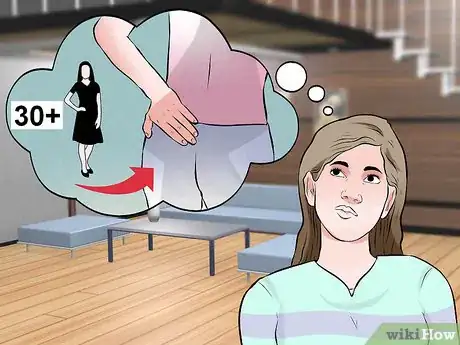


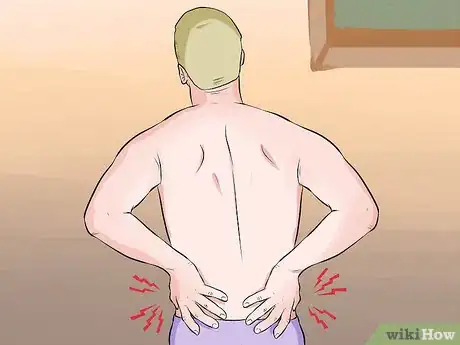

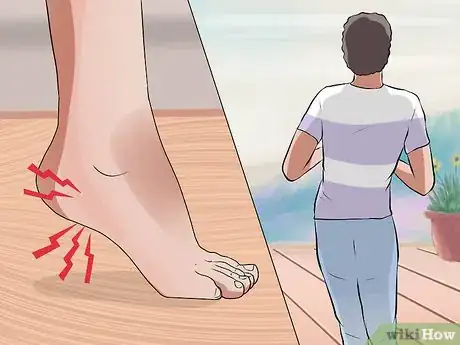
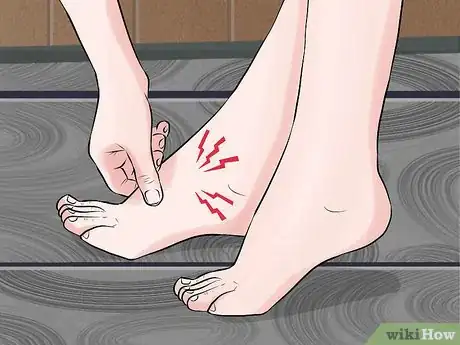

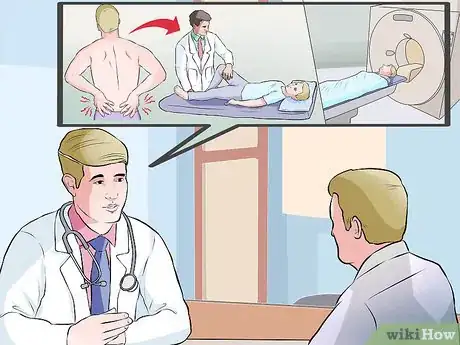
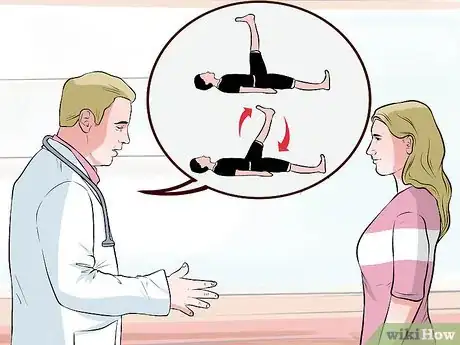
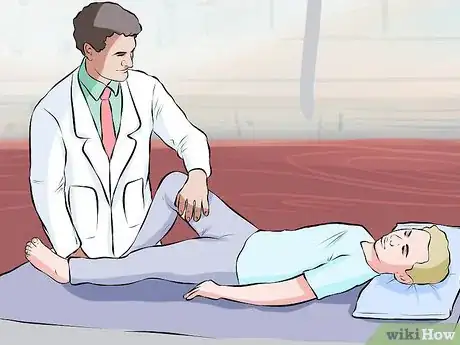
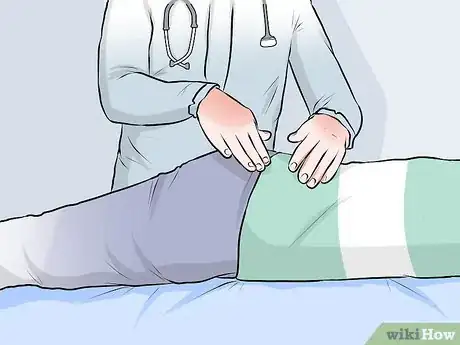
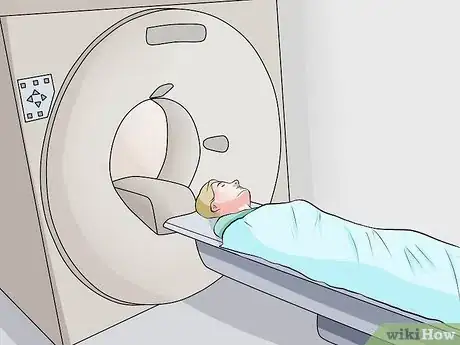
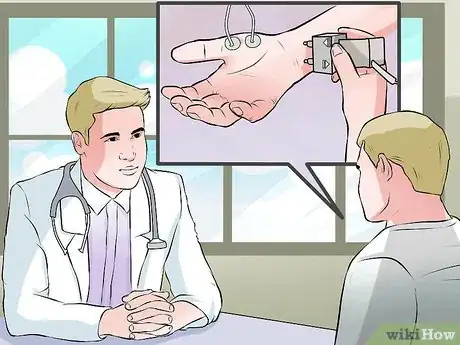
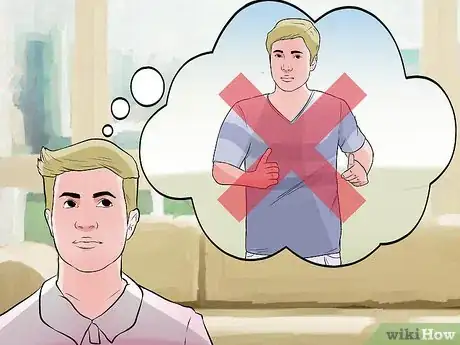
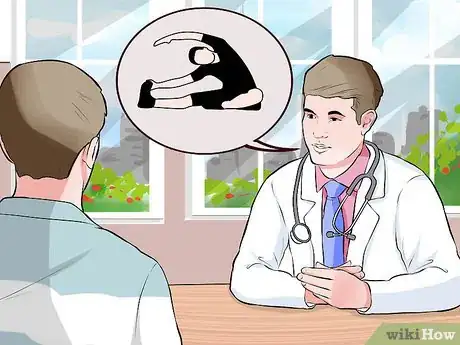
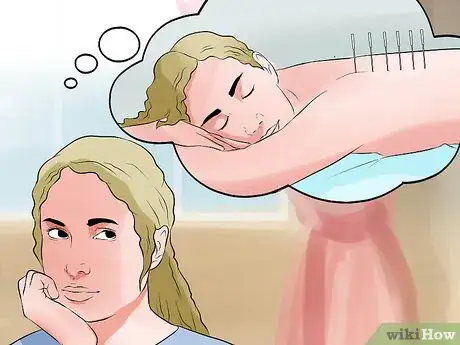
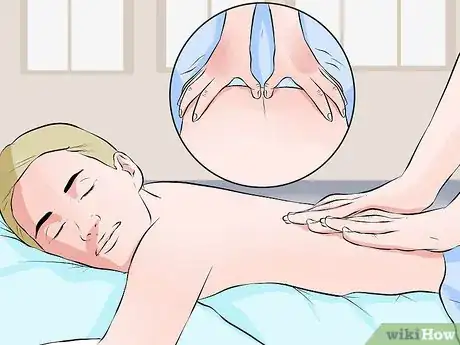
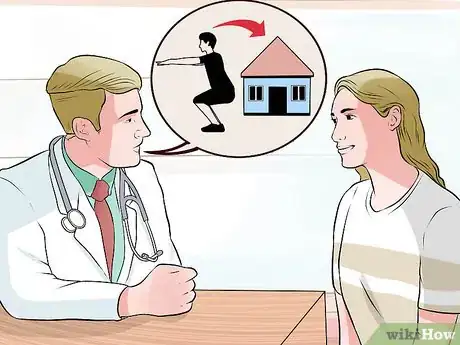
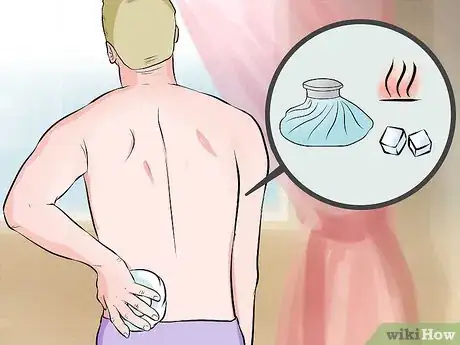

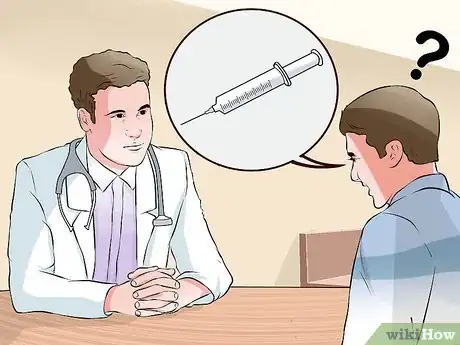
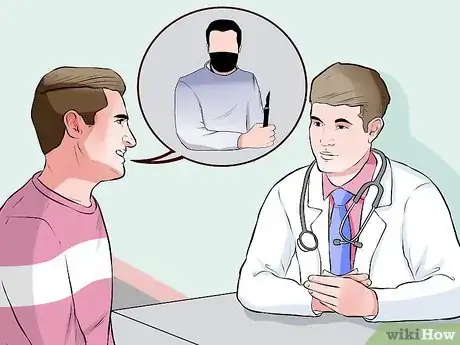





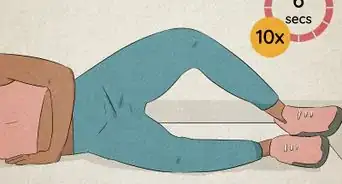
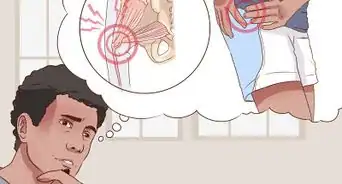















































Medical Disclaimer
The content of this article is not intended to be a substitute for professional medical advice, examination, diagnosis, or treatment. You should always contact your doctor or other qualified healthcare professional before starting, changing, or stopping any kind of health treatment.
Read More...